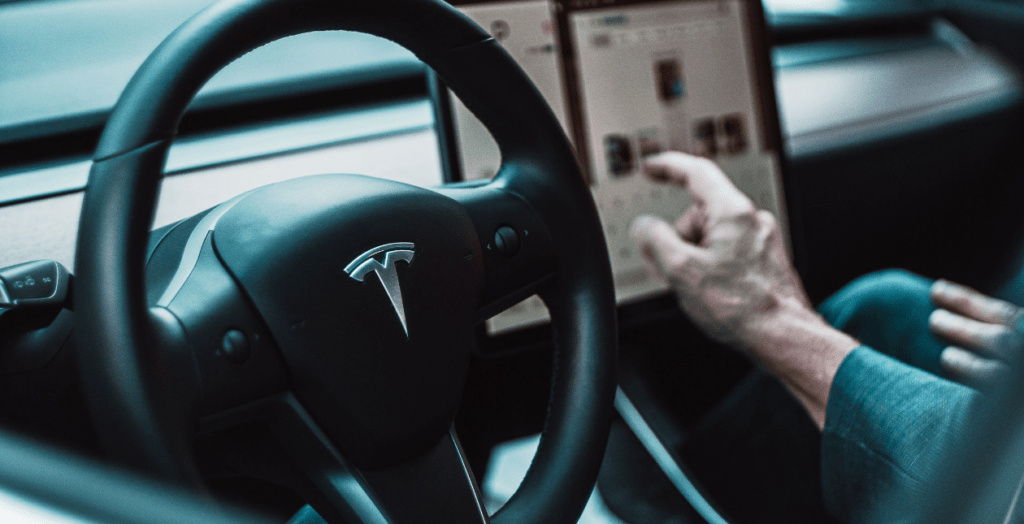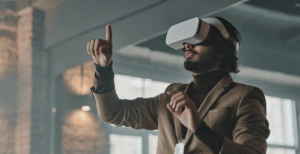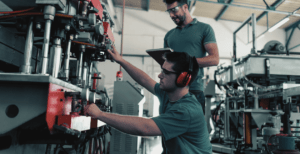
Crafting Exceptional Experiences through UX and Industrial Design
In the contemporary market landscape, standing out requires more than just delivering products—it demands the creation of meaningful experiences. This is where the convergence of UX design and industrial product design becomes a strategic imperative. This blog sets out to explore the pivotal role of user experience (UX) in the broader context of business success, emphasizing how the thoughtful integration of UX design principles can distinguish a company in a crowded marketplace.
Elevating Product Design with User Experience Principles
Before delving into the profound impact of UX on business success, it’s crucial to comprehend the essence of good UX. User Experience (UX) design serves as the linchpin that bridges the gap between a product’s functionality and its reception by end-users. It encompasses a holistic approach to designing, ensuring that every interaction a user has with a product is not just seamless but also delightful.
In essence, the significance of UX design lies in its ability to create products that are not only visually appealing but also highly functional and intuitive. Beyond aesthetics, UX design addresses the human aspect of technology, considering the emotions, perceptions, and behaviors of users. A well-crafted UX is like a silent guide that navigates users through a product effortlessly, leaving them satisfied and, more importantly, eager to return.
Key Aspects of UX Design:
1. Usability:
- UX design focuses on making products easy to use, ensuring that users can navigate through interfaces with minimal friction.
- Intuitive navigation and clear user interfaces contribute to a positive user experience.
2. Accessibility:
- An inclusive approach to UX design considers users with diverse needs, ensuring that the product is accessible to everyone, regardless of abilities or disabilities.
3. Delightful Interactions:
- UX design aims to create not just functional but enjoyable interactions, fostering a positive emotional connection between users and the product.
4. User-Centered Design:
- Putting users at the center of the design process ensures that the final product meets their needs and expectations.
5. Iterative Improvement:
- UX design involves continuous iteration and improvement based on user feedback, ensuring that the product evolves to meet changing user preferences.
Incorporating UX design principles into the product development process goes beyond enhancing aesthetics. It directly impacts user satisfaction, loyalty, and the overall success of a product in the market. As we explore the role of UX in business success, keep in mind that it’s not just a design philosophy but a strategic approach to building products that users love and, consequently, products that thrive in the competitive market landscape.
Please refer to the article about the impact and fundamental components of UX Design in Product Design to gain further insights.

Harmonizing Industrial Design and UX for Lasting Impressions
Positive user experiences serve as the cornerstone for building enduring relationships with customers, creating a sense of loyalty that extends beyond mere transactions.
An exemplary case that illustrates the symbiotic relationship between industrial design and UX design in fostering customer loyalty is the seamless integration of these principles in the creation of the Tesla Model 3.
UX design and customer loyalty of Tesla Model 3
The Tesla Model 3, a groundbreaking electric car, stands out not only for its innovative technology but also for the exceptional user experience it delivers. The sleek and minimalist industrial design of the vehicle is not just visually striking but also contributes to the overall user experience. The clean lines, uncluttered interior, and intuitive controls embody the principles of both industrial and UX design.
Continuous improvements based on user feedback demonstrate a commitment to user-centered design, ensuring that the Model 3 evolves to meet user expectations.
The positive user experience provided by the Tesla Model 3 extends beyond the initial purchase. Owners often express a strong sense of loyalty, not just to the product but to the brand itself. The seamless integration of industrial design aesthetics and user-centric features creates a lasting impression that goes beyond the functional aspects of the vehicle, contributing to the brand’s success and cultivating a community of dedicated customers.
This example underscores the idea that the harmonious integration of industrial design and UX design principles can result in a product that not only meets functional requirements but also creates an emotional connection with users, fostering loyalty that extends well into the future. As we explore the impact of good UX on business success, such examples showcase the transformative power of design in building

Merging UX and Product Design for Market Dominance
To illustrate the direct correlation between UX and business success in the realm of hardware product design, we’ll delve into two compelling case studies. These case studies underscore how companies strategically integrated UX design principles with innovative hardware product design to achieve market dominance and cultivate a loyal customer base.
Case Study 1: Nest Learning Thermostat
UX Integration:
The Nest Learning Thermostat is a prime example of how UX design can enhance hardware functionality. Its intuitive interface learns user preferences, adjusts temperature settings, and provides energy-saving suggestions, creating a personalized experience.
Product Design Impact:
The device’s elegant and unobtrusive hardware design, complemented by the seamless integration of UX principles, has led to widespread adoption. Users not only appreciate its energy-efficient features but also the hassle-free and delightful interaction it offers.
Case Study 2: DJI Mavic Pro Drone
UX Integration:
DJI’s Mavic Pro Drone demonstrates how UX design can transform complex technology into an accessible and enjoyable experience. The drone’s user-friendly mobile app, gesture controls, and automated flight features simplify the user experience.
Hardware Product Design Impact:
The compact and foldable hardware design, along with advanced technology, has positioned the Mavic Pro as a market leader. The seamless integration of hardware and UX design has expanded the drone market beyond hobbyists to include a broader consumer base.

Overcoming Challenges in Integrating UX and Industrial Product Design
While the benefits of good UX are evident, businesses often encounter challenges when navigating the intersection of UX design and industrial product design. Recognizing and addressing these challenges are essential for ensuring a seamless integration that delivers exceptional user experiences. Below are some common obstacles and practical solutions:
Resource Constraints
One of the common hurdles encountered is limited resources, including time and budget, which can impede the comprehensive implementation of both UX design and industrial product design principles. To address this challenge, prioritization becomes crucial. Identifying key elements with the highest user impact and conducting early user research can guide incremental improvements over time, even within resource constraints.
Misalignment Between Design and Business Goals
Challenge: The misalignment of design objectives with overarching business goals can lead to disjointed efforts and compromised outcomes.
Solution: Foster open communication between design teams and business stakeholders. Ensure that design decisions align with broader business strategies. Establish clear objectives and key performance indicators (KPIs) to measure success.
Resistance to Change
One of the common hurdles encountered is limited resources, including time and budget, which can impede the comprehensive implementation of both UX design and industrial product design principles. To address this challenge, prioritization becomes crucial. Identifying key elements with the highest user impact and conducting early user research can guide incremental improvements over time, even within resource constraints.
To gain further insights into the challenges businesses commonly face when navigating the convergence of UX design and industrial product design, as well as the corresponding solutions, we invite you to refer to this article.
Future-Proofing Business with UX and Industrial Design Excellence
A well-crafted user experience directly influences customer retention, and overall revenue growth.
Prioritizing user satisfaction and aligning product design with UX principles is not just a design philosophy but a strategic business imperative. This approach enables businesses to confidently navigate the competitive landscape, secure in the knowledge that a positive user experience correlates with sustained revenue growth.
As businesses continue to evolve, those that recognize and prioritize the importance of UX design and industrial design position themselves to future-proof their operations, gaining a competitive edge in the ever-evolving market.
For further insights into the correlation between Product and UX Design, and how it can be measured through ROI, we invite you to explore this enlightening article: “Quantifying The Impact: Measuring ROI Through Product And UX Design Synergy“.




